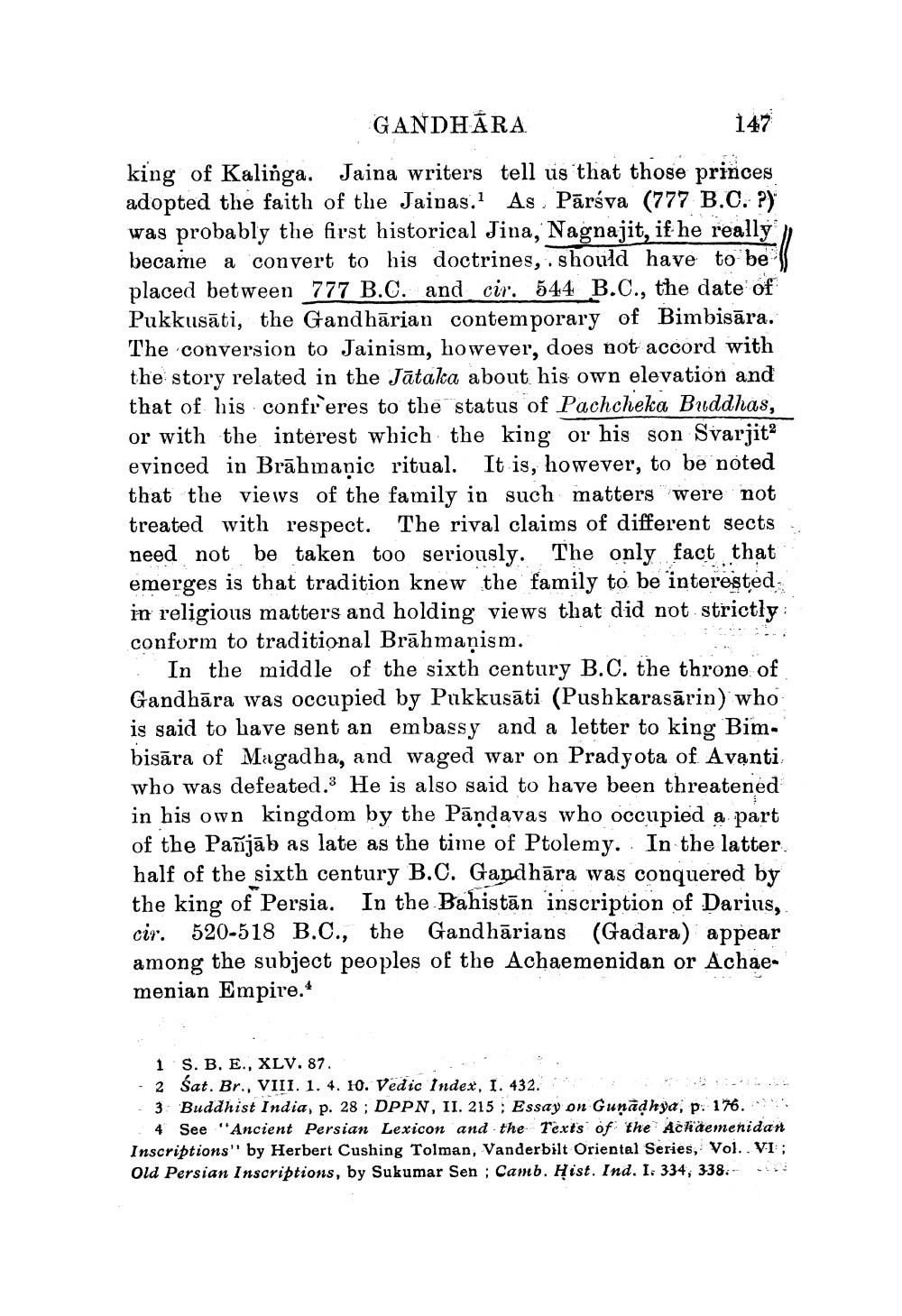________________
GANDHARA
147
king of Kalinga. Jaina writers tell us that those princes adopted the faith of the Jainas. As. Parsva (777 B.C. ?) was probably the first historical Jina, Nagnajit, if he really became a convert to his doctrines, should have to be placed between 777 B.C. and cir. 544 B.C., the date of Pukkusati, the Gandharian contemporary of Bimbisara. The conversion to Jainism, however, does not accord with the story related in the Jataka about his own elevation and that of his confreres to the status of Pachcheka Buddhas, or with the interest which the king or his son Svarjit evinced in Brahmanic ritual. It is, however, to be noted that the views of the family in such matters were not treated with respect. The rival claims of different sects need not be taken too seriously. The only fact that emerges is that tradition knew the family to be interestedin religious matters and holding views that did not strictly conform to traditional Brāhmaṇism.
In the middle of the sixth century B.C. the throne of Gandhara was occupied by Pukkusāti (Pushkarasarin) who is said to have sent an embassy and a letter to king Bim-" bisara of Magadha, and waged war on Pradyota of Avanti who was defeated. He is also said to have been threatened in his own kingdom by the Pandavas who occupied a part of the Pañjab as late as the time of Ptolemy. In the latter. half of the sixth century B.C. Gandhara was conquered by the king of Persia. In the Bahistan inscription of Darius, 520-518 B.C., the Gandharians (Gadara) appear among the subject peoples of the Achaemenidan or Achae menian Empire.*
cir.
1 S. B. E., XLV. 87.
- 2 Sat. Br., VIII. 1. 4. 10. Vedic Index, 1. 432.
3 Buddhist India, p. 28; DPPN, II. 215; Essay on Gunadhya, p. 176. 4 See "Ancient Persian Lexicon and the Texts of the Achaemenidan Inscriptions" by Herbert Cushing Tolman, Vanderbilt Oriental Series, Vol. VI ; Old Persian Inscriptions, by Sukumar Sen; Camb. Hist. Ind. I. 334, 338.




